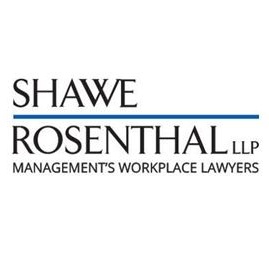Supreme Court Rules that Unions May Be Sued for Strike Damage to Employer Property
In (rare) good news for unionized employers, the U.S. Supreme Court has held that the National Labor Relations Act (NLRA) does not insulate a union from tort claims that it intentionally destroyed employer property during a strike.
Federal Preemption and the NLRA. As a general matter, federal law preempts state law when the two conflict. However, under the long-standing Garmon doctrine articulated by the Supreme Court, “the NLRA preempts state law even when the two only arguably conflict.” (Supreme Court’s emphasis).
The NLRA protects employees’ rights to engage in concerted (i.e. group) activity for the purpose of collective bargaining or other mutual aid or protection. This specifically includes the right to strike. However, this right is not absolute – the National Labor Relations Board has long held that “the NLRA does not shield strikers who fail to take ‘reasonable precautions’ to protect their employer’s property from foreseeable, aggravated, and imminent danger due to the sudden cessation of work.”
Background of the Case. In Glacier Northwest, Inc. v. Int’l Brotherhood of Teamsters, following the expiration of the collective bargaining agreement, the union called for a work stoppage on a morning that it knew the company was preparing and delivering a large quantity of concrete to customers. The mixed concrete was loaded onto the trucks, the truck drivers left the facility, but then returned without making the deliveries. The company engaged in emergency measures to offload the concrete before it could harden and cause significant damage to the trucks, but all of the mixed concrete was lost.
The company sued the union in state court, asserting tort claims (i.e. conversion of property and trespass to chattels) under state law for loss of the concrete. The union argued that the NLRA preempted the state tort claims. According to the union, the NLRA’s protection of employees’ concerted activity extended to the drivers’ conduct here. This would mean that the State lacks the authority to hold the union accountable for consequences arising from the strike. Washington state’s highest state court agreed, stating that the “loss was incidental to a strike arguably protected by federal law.”
The Supreme Court’s Ruling. The Supreme Court disagreed with the Washington state court, finding that the drivers “sudden cessation of work” placed the company’s property “in foreseeable and imminent danger” in that the concrete was destroyed and the risk of harm to the trucks “was both foreseeable and dangerous.” The Supreme Court further found that the union “failed to ‘take reasonable precautions’ to protect against this foreseeable and imminent danger.” Although the Supreme Court recognized that the “reasonable precautions” test does not mandate any particular actions, here in the present case, the union failed to take even what the Supreme Court deemed to be “minimal precautions.” Specifically, the strike began after the trucks were already loaded, the drivers returned to the company facility and abandoned their trucks without notifying the company, and the union failed to direct the drivers to follow company instructions to facilitate a safe transfer of the affected equipment.
The Supreme Court rejected the union’s argument that the NLRA’s protections should be interpreted generously, noting that the right to strike is limited by the reasonable precautions test, and that it is necessary to determine whether the strike exceeded this limit. It also rejected the union’s argument that Board precedent protects strikers’ conduct even when there is a risk that perishable goods would spoil, since the workers in this instance “prompted the creation of the perishable product” by reporting for duty and pretending that they would deliver the product. (Supreme Court’s emphasis).
The Supreme Court further observed that although the NLRA does not require timing the strike to minimize economic harm or notice to the employer, these “are relevant considerations in evaluating whether strikers took reasonable precautions, whether harm to property was imminent, and whether that danger was foreseeable.” Moreover, the fact that the drivers returned the trucks to the facility and may have left the drums rotating (which delayed hardening of the concrete) did not establish reasonable precautions to protect the trucks. The Supreme Court rather pointedly stated that, “refraining from stealing an employer’s vehicles does not demonstrate that one took reasonable precautions to protect them.” And it further noted that the rotation (which was disputed) only forestalled hardening for a time.
In conclusion, the Supreme Court found that, “[b]ecause the Union took affirmative steps to endanger Glacier’s property rather than reasonable precautions to mitigate that risk, the NLRA does not arguably protect its conduct.” Accordingly, the NLRA did not preempt the state law claims for destruction of the company’s property.
Lessons for Employers. In light of the recent steady stream of heavily pro-worker rulings and guidance from the NLRB, this ruling is a rare pro-employer development. It also provides some common-sense and practical relief to employers facing intentional harm by striking workers and unions. While the rights of employees to strike are fundamental, this ruling requires workers and unions to respect the rules of engagement.







